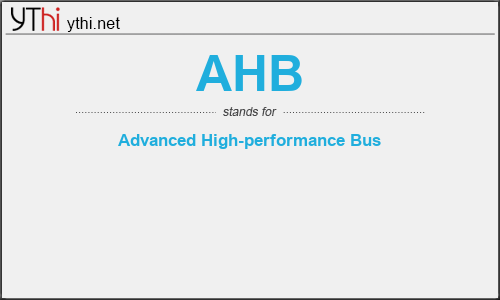What does AHB mean? What is the full form of AHB?
The Full Form of AHB is Advanced High-performance Bus.
The ARM Advanced Microcontroller Bus Architecture (AMBA) is an open-standard, on-chip interconnect specification for the connection and management of functional blocks in system-on-a-chip (SoC) designs. It facilitates development of multi-processor designs with large numbers of controllers and components with a bus architecture. Since its inception, the scope of AMBA has, despite its name, gone far beyond microcontroller devices. Today, AMBA is widely used on a range of ASIC and SoC parts including applications processors used in modern portable mobile devices like smartphones. AMBA is a registered trademark of ARM Ltd.
AMBA was introduced by ARM in 1996. The first AMBA buses were the Advanced System Bus (ASB) and the Advanced Peripheral Bus (APB). In its second version, AMBA 2 in 1999, ARM added AMBA High-performance Bus (AHB) that is a single clock-edge protocol. In 2003, ARM introduced the third generation, AMBA 3, including Advanced eXtensible Interface (AXI) to reach even higher performance interconnect and the Advanced Trace Bus (ATB) as part of the CoreSight on-chip debug and trace solution. In 2010 the AMBA 4 specifications were introduced starting with AMBA 4 AXI4, then in 2011 extending system-wide coherency with AMBA 4 AXI Coherency Extensions (ACE). In 2013 the AMBA 5 Coherent Hub Interface (CHI) specification was introduced, with a re-designed high-speed transport layer and features designed to reduce congestion.
These protocols are today the de facto standard for embedded processor bus architectures because they are well documented and can be used without royalties.
AHB
means
Advanced High-performance Bus![]()
Translate Advanced High-performance Bus to other language.


Leave a Reply
You must be logged in to post a comment.